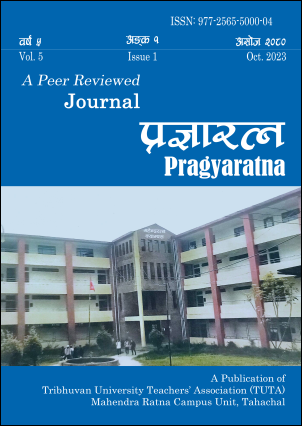Menstruation Hygiene Practices Among Girl Students in Kathmandu Valley
DOI:
https://doi.org/10.3126/pragyaratna.v5i1.59275Keywords:
Menstrual hygiene, higher education girls, disposal of pads, management of sanitary napkinAbstract
The study, titled "Menstruation hygiene practices among higher-level girls students," explores the natural process of menstruation in the female reproductive system occurring monthly. Governed by hormonal changes, menstruation is a pivotal facet of the menstrual cycle, and fertility and associated with physical and emotional symptoms like cramps, mood swings, and fatigue. Proper menstrual hygiene practices are vital for women's health during this period. Inadequate water, sanitation, hygiene facilities, limited education, and deficient menstrual hygiene management make girls perceive menstruation as embarrassing and uncomfortable. In Nepal, many teenage girls lack education about menstruation, adversely affecting their health. The study aims to assess menstruation hygiene practices among higher-level female students before and during menstruation. Using quantitative and descriptive methods, the research selected 250 students through simple random sampling from 650 enrolled on two constituent campuses. These campuses were chosen via convenience sampling from 22 within the Kathmandu Valley. Ethical considerations were followed, ensuring confidentiality and obtaining oral consent from participants. The findings underline the significance of comprehensive menstrual health education and the sway of cultural beliefs on menstruation experiences. Encouraging open discussions, dispelling myths, ensuring access to accurate information, and cultivating supportive environments are essential for enhancing menstrual health and overall well-being.




